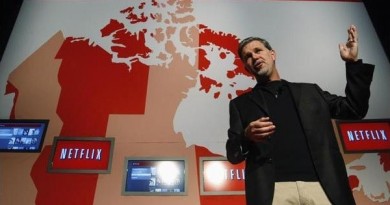Solving Data Center Space, Power and Cooling Crunch
Inadequate/ limited space, power, and cooling capacity have led many data centers or organizations to be acquainted with capital and operating costs for their set ups. Data centers have become an increasing part of their financial plan over time. The lack of flexibility caused by obsolete, incompetent data centers has also begun to affect business dealing dexterity. Undeniably, many data centers built in the last 15 years have reached the precipitate end of existence. This is because; they were not built to sustain the development that actually has taken place of the years. Data centers are now realizing that better efficiency can reduce costs and increase business agility. This has led them to take necessary steps towards it.
Large firms are assessing ways to be more environmental friendly as a fine PR gesture. Certainly, even the rising substantiation of global climate change has not stimulated a lot of governmental or business organizations to take remarkable measures to diminish carbon dioxide emissions. By cutting down energy utilization and using substitute energy sources businesses can improve cost efficiency. Data center operators are currently everywhere. They are now leaning towards space, power, and cooling crunch that using “Green” technology which can help them to assuage.
The problem is that data center operators are finding themselves in a space, power, and cooling crunch which is a result of years of constructing and setting up applications without considering the power consumption. Data centers are burdened with an inheritance of outdated applications that were deployed with one function per server or one function spread across a whole intact service cluster of servers. These servers are outdated and generate a reduced amount of performance per watt than present day servers. Applications have classically been deployed in silos, with the server technology of the day deployed within silos, servers sized for the utmost conceivable workload, and negative reserve sharing between application silos. On top of all this, power requirements are beyond data center design criteria, designs that were expected to last for as long as 20 years. Data centers were once built to hold up to 40-70watts of energy use per square foot costing roughly around USD $400 per square foot to build that included power and cooling infrastructure. Nowadays, requirements sum up to 500 watts per square foot, with building costs close to $6,000 per square foot. Every watt that is used requires more or less the same number of watts to get rid of the heat that is generated. When data center goes on battery power, and when air-conditioning is out, where it once took 15 minutes for the temperature to rise 25 degrees, it now takes less than a minute for the present day servers.
There are number of ways to solving data center power and cooling crunch:
- Putting away aging data center equipment with up-to-date, more potent and energy-efficient servers and storage is a simple way to optimize power efficiency.
- Using virtualization to consolidate minor number of systems.
- Advancing power and cooling efficiency in every aspect of operations, from servers to the tool work area.
- Reconfiguring data center spaces with a modular, flexible, and competent plan that chains expansion and an ability to take the constant equipment turn over which distinguishes most data centers today.
- Arrange modern storage systems and tape libraries that can seize more data while consuming less power.
- Consolidating storage so it can be administered as a sole pool of resources.
- Installing competent spot cooling
To obtain the advantage from implementing power optimization strategies, it’s essential to reconfigure the already active data center spaces or create fresh ones. So, here are some of the ways to crack space problems in data center:
- Accessibility through a design that includes suitable use of tier levels.
- Capacity to support multiple tiers in a single data center
- A design that is flexible and adaptable, ready to align IT resources with altering business purposes
- A highly supportive cabling, power, and cooling infrastructure in the data center
- A design which can be used for the few generations of equipment, which are likely to have even-higher power, cooling, and cabling needs.
- Environmental awareness that identifies “going green” makes a company look good, mainly when it engages effortless methods like – using outside air for cooling, can save costs over the years.
- Smart observation that allows power utilization to be scrutinized at all level in the power allotment hierarchy, giving clarity into existing operational factor and the impact of other power saving steps.
Data Center Talk updates its resources every day. Visit us to know of the latest technology and standards from the data center world.
Please leave your views and comments on DCT Forum

